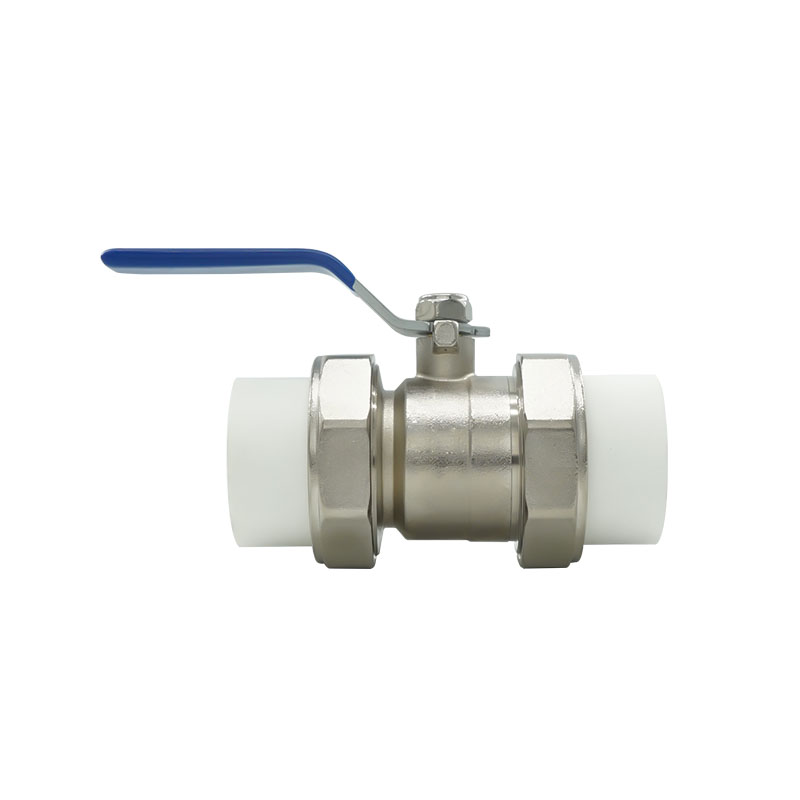Here are the key features and components of a PPR ball valve
2023-12-27
A PPR (polypropylene random copolymer) ball valve is a type of valve used in plumbing and water supply systems, particularly in PPR piping systems. PPR is a type of plastic known for its excellent thermal and chemical resistance, making it suitable for use in hot and cold water applications. A ball valve is a quarter-turn valve that uses a hollow, perforated, and pivoting ball to control the flow of water through the pipe. Here are the key features and components of a PPR ball valve:
1. Material:
- PPR Construction: The body of the ball valve is typically made of PPR material, which is resistant to corrosion, chemical degradation, and scaling. PPR is also known for its durability and longevity.
2. Ball Mechanism:
- Pivoting Ball: Inside the valve, there is a hollow ball with a hole (port) in the center. When the valve is open, the hole aligns with the pipe, allowing water to flow through. When closed, the ball is rotated 90 degrees, blocking the flow.
3. Handle:
- Lever or Handle: The valve is controlled by a lever or handle attached to the ball. Turning the handle 90 degrees opens or closes the valve, providing a quick and easy way to control the water flow.
4. Seals and Gaskets:
- Sealing Components: The valve includes seals and gaskets to prevent water leakage when the valve is in the closed position. These components are typically made of rubber or other resilient materials.
5. End Connections:
- Socket or Threaded Ends: PPR ball valves are available with socket or threaded ends, allowing them to be connected to PPR pipes using appropriate fittings.
6. Size Range:
- Various Sizes: PPR ball valves come in various sizes to accommodate different pipe diameters commonly used in plumbing and water supply systems.
7. Pressure Rating:
- Pressure Resistance: PPR ball valves are designed to withstand specific pressure ratings, ensuring they can handle the pressure in the piping system without leaking or failing.
8. Temperature Range:
- Thermal Stability: PPR material is known for its thermal stability, allowing PPR ball valves to handle both hot and cold water applications.
9. Color Coding (Optional):
- Color Differentiation: In some cases, PPR ball valves may be color-coded for easy identification and differentiation of their functions or applications.
10. Application:
- Water Supply Systems: PPR ball valves are commonly used in domestic and industrial water supply systems for controlling the flow of hot and cold water.
11. Installation:
- Easy Installation: PPR ball valves are generally easy to install, especially when used in conjunction with PPR pipes and fittings.
PPR ball valves are popular in plumbing systems due to their reliability, ease of use, and resistance to various environmental factors. They provide a convenient and efficient way to control the flow of water within a piping system. It's important to choose the appropriate size, pressure rating, and end connections based on the specific requirements of the plumbing application.



